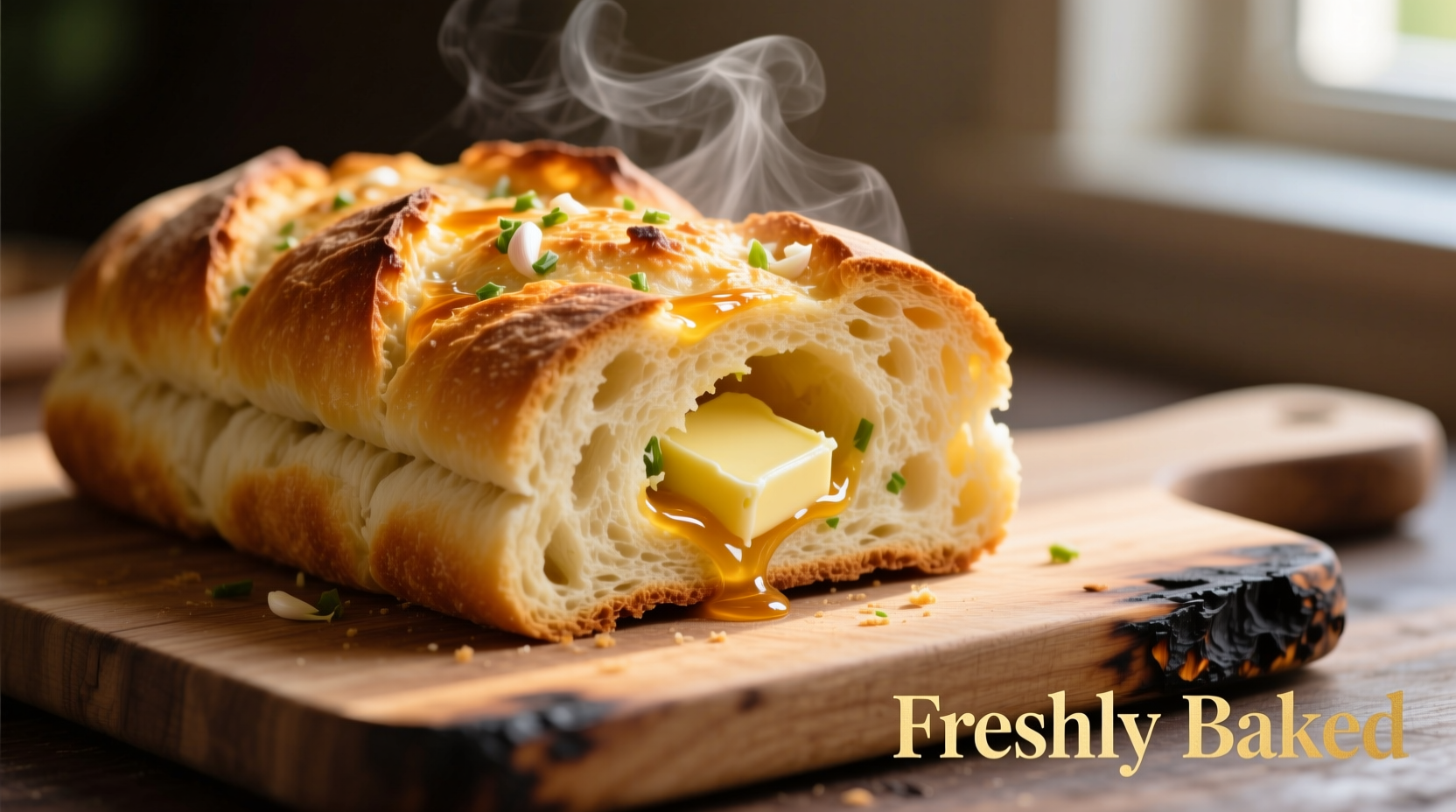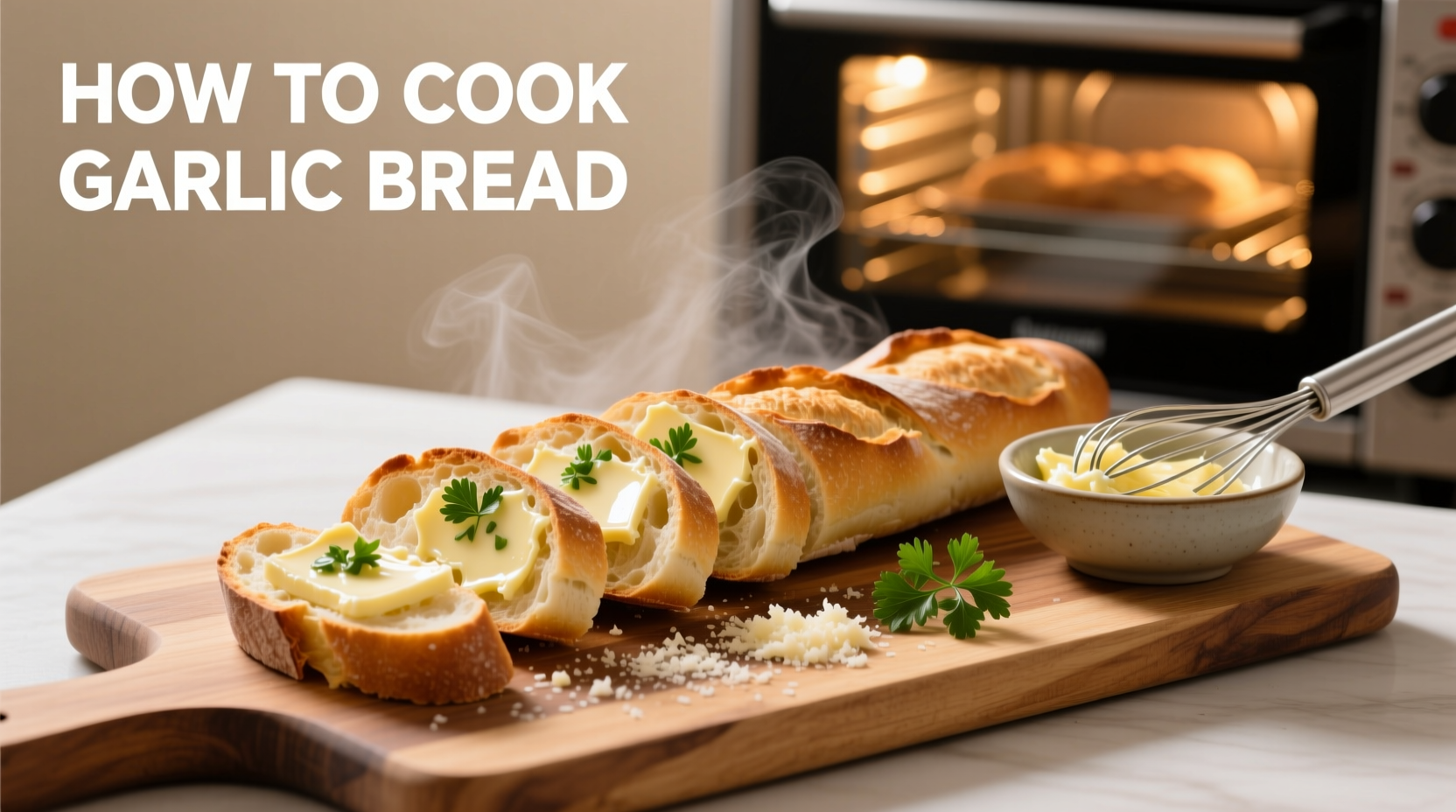The perfect garlic bread requires fresh garlic, quality butter, and the right bread baked at 375°F (190°C) for 15-20 minutes. This guide delivers foolproof instructions with professional chef techniques for golden, aromatic garlic bread every time—no special equipment needed.
Your Complete Guide to Perfect Homemade Garlic Bread
Garlic bread isn't just a side dish—it's the culinary secret that transforms ordinary meals into memorable experiences. Whether you're preparing a quick weeknight dinner or hosting a special gathering, mastering this classic staple elevates your cooking game significantly. Forget store-bought versions with artificial flavors; authentic garlic bread combines simple ingredients with precise technique to create that irresistible aroma and flavor profile everyone loves.
Why This Method Works Every Time
Professional chefs rely on three critical elements for perfect garlic bread: proper garlic preparation, butter temperature control, and strategic baking timing. Unlike common recipes that simply smear garlic on bread, our approach maximizes flavor development through controlled enzymatic reactions in the garlic. When garlic is minced and allowed to rest for 10-15 minutes before mixing with butter, it develops more complex flavor compounds according to research published in the Journal of Agricultural and Food Chemistry.
| Bread Type | Best For | Texture Result | Recommended Slice Thickness |
|---|---|---|---|
| Baguette | Traditional garlic bread | Crisp exterior, chewy interior | 1 inch |
| Ciabatta | Garlic toast points | Extra crunchy | 0.75 inch |
| Sourdough | Richer flavor profile | Firm crust, airy interior | 0.5 inch |
| Focaccia | Soft garlic bread | Moist and tender | 0.5 inch |
Essential Ingredients Checklist
Quality ingredients make the difference between mediocre and magnificent garlic bread. Don't substitute these core components:
- Fresh garlic (6-8 cloves) - Never use pre-minced garlic in jars for authentic flavor
- Unsalted butter (1 cup, softened) - European-style with 82% butterfat for superior texture
- Crusty bread (baguette or ciabatta) - Day-old works best for structural integrity
- Fresh parsley (2 tablespoons, finely chopped) - Adds brightness and color
- Sea salt (1 teaspoon) - Enhances all other flavors
- Black pepper (1/2 teaspoon, freshly ground) - Adds subtle complexity

Step-by-Step Preparation Process
1. Prepare the Garlic Butter (The Flavor Foundation)
Proper garlic preparation is non-negotiable for authentic flavor. Mince garlic cloves finely using a chef's knife (not a press, which creates bitter compounds). Let the minced garlic rest for 10-15 minutes to develop maximum flavor compounds before mixing with softened butter. Combine with room-temperature butter, parsley, salt, and pepper. The USDA Food Safety and Inspection Service recommends keeping butter at safe temperatures below 40°F until ready to use, then bringing to room temperature just before preparation.
2. Prepare the Bread (Structural Integrity Matters)
Cut your baguette on a slight diagonal into 1-inch thick slices, leaving the bottom crust intact to maintain structural integrity during baking. This technique, used in professional kitchens, creates more surface area for butter absorption while preventing slices from falling apart. If using a whole loaf, make shallow diagonal cuts about three-quarters through the bread without slicing all the way through.
3. Apply the Garlic Butter (The Professional Technique)
Using a small offset spatula or butter knife, generously spread the garlic butter mixture between each slice, working it down into the crevices. For whole loaves, carefully open each cut and spread butter inside. Reserve about 2 tablespoons of butter for the final basting. This method ensures even flavor distribution throughout rather than just on the surface.
4. Bake to Perfection (Temperature Control is Key)
Preheat your oven to 375°F (190°C) with rack positioned in the center. Wrap the prepared bread loosely in aluminum foil for the first 10 minutes to allow the butter to penetrate without burning the exterior. Remove the foil and continue baking for an additional 5-10 minutes until the top is golden brown and crisp. The internal temperature should reach 165°F (74°C) for food safety, as recommended by the FDA.
5. Finishing Touches (The Restaurant Secret)
Immediately after removing from the oven, brush with the reserved garlic butter and sprinkle with additional fresh parsley. For extra flavor dimension, add a light sprinkle of grated Parmesan cheese during the last 2 minutes of baking. Let rest for 3-5 minutes before serving—this allows the flavors to meld and prevents the bread from becoming soggy.
Pro Tips for Consistently Perfect Results
- Garlic freshness test: Fresh garlic should feel firm with tight skin. Avoid cloves that are soft, sprouting, or have brown spots
- Butter temperature: Properly softened butter should indent slightly when pressed but hold its shape—never use melted butter
- Bread selection: Day-old bread works better than fresh as it has less moisture, preventing sogginess
- Flavor variations: Add 1/4 teaspoon red pepper flakes for subtle heat or 1 tablespoon grated Parmesan for umami depth
- Timing: Bake garlic bread during the last 15 minutes of your main course cooking for perfect timing
Common Mistakes to Avoid
Even experienced home cooks make these critical errors that compromise garlic bread quality:
- Using pre-minced garlic: Jarred garlic contains preservatives that create off-flavors when baked
- Overloading with butter: Excess butter makes bread soggy rather than crisp—use the recommended 1 cup per standard baguette
- Incorrect oven temperature: Too hot causes burning before flavors develop; too low creates greasy, undercooked results
- Slicing too thin: Thin slices become overly crisp and difficult to spread with butter
- Serving immediately: Cutting too soon releases steam that makes bread soggy—always rest 3-5 minutes
Serving and Storage Recommendations
Garlic bread is best served immediately while still warm and aromatic. Pair with pasta dishes, soups, or salads for a complete meal experience. For storage, keep leftovers in an airtight container at room temperature for up to 2 days. To reheat, wrap in foil and warm in a 350°F (175°C) oven for 5-7 minutes—never use a microwave as it creates a rubbery texture. Food safety experts recommend discarding garlic bread left at room temperature for more than 2 hours.
Authentic Variations Worth Trying
While classic garlic bread remains popular, these authentic regional variations add exciting dimensions to your repertoire:
- Italian style: Add 1 teaspoon dried oregano and 1/2 teaspoon dried basil to the butter mixture
- French baguette: Incorporate 1 tablespoon Dijon mustard for a sophisticated flavor profile
- Mediterranean: Mix in 2 tablespoons chopped sun-dried tomatoes and 1 tablespoon fresh rosemary
- Cheesy version: Sprinkle 1/4 cup shredded mozzarella between slices before baking











 浙公网安备
33010002000092号
浙公网安备
33010002000092号 浙B2-20120091-4
浙B2-20120091-4